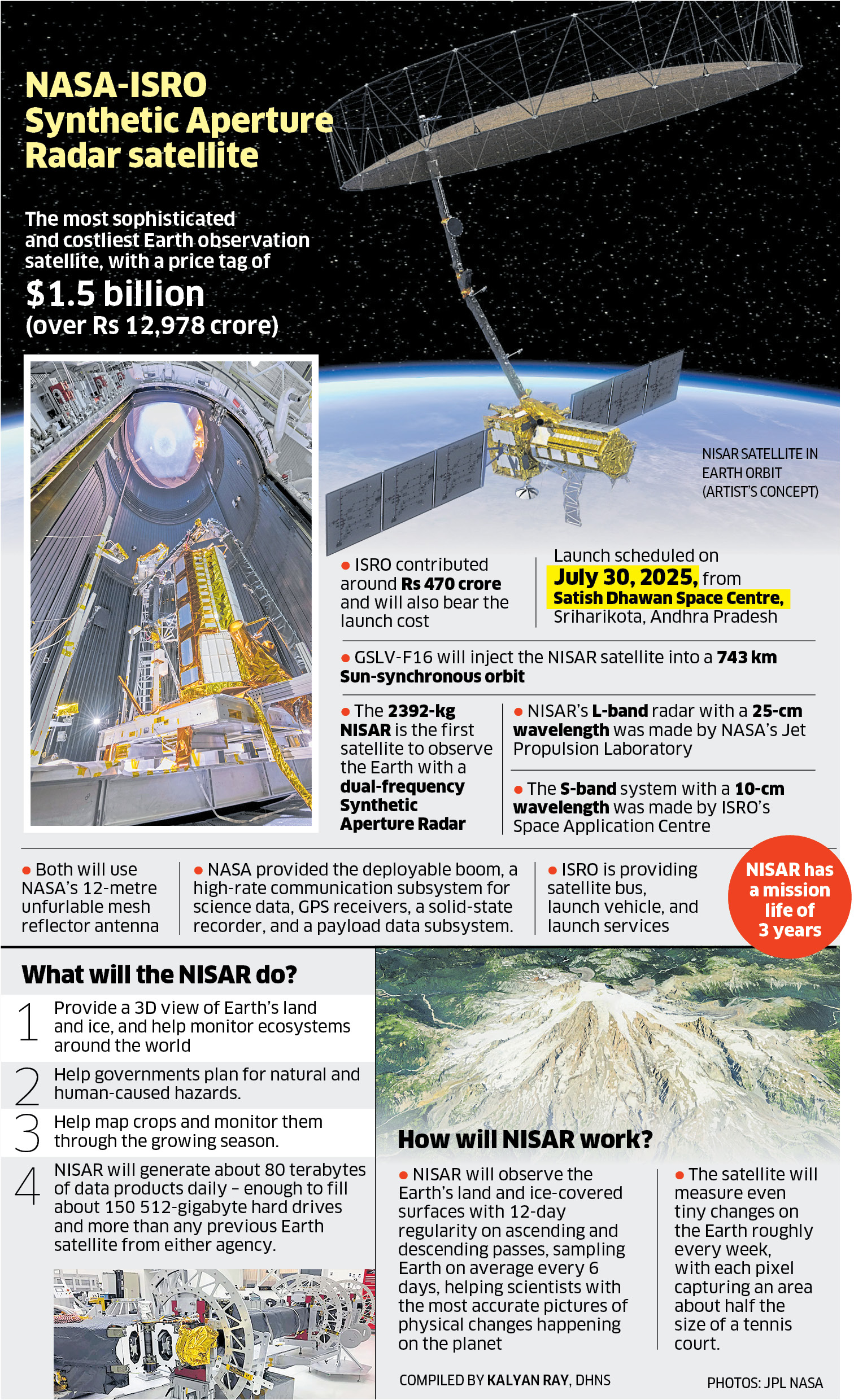Context:
The NASA-ISRO Synthetic Aperture Radar (NISAR) satellite was successfully launched on July 30, 2025 from the Satish Dhawan Space Centre at Sriharikota in Andhra Pradesh. The satellite was launched by Geosynchronous Satellite Launch Vehicle (GSLV)-F16 rocket.
About NISAR satellite:
The NISAR satellite, short for NASA-ISRO Synthetic Aperture Radar satellite, is a Earth observation satellite. Weighing 2,392 kg, the satellite is designed to operate in a sun-synchronous orbit with a mission life of 5 years.
- It is the first satellite jointly developed by the ISRO and the U.S.’s National Aeronautics and Space Administration (NASA).
- Further it is the world's first Earth observation satellite equipped with dual-frequency SAR, comprising NASA's L-band and ISRO's S-band radars. This enables the satellite to capture high-resolution images of the Earth's surface, regardless of weather conditions or time of day.
- Additionally, it has12-meter unfurlable mesh reflector antenna, allows the satellite to capture high-quality radar data. This antenna is built by NASA and deployed using a multistage boom. It will be used to study various Earth phenomena, such as tectonic movements, glacier dynamics, and ecosystem changes.

Objectives and Applications
NISAR will provide day-and-night, all-weather imaging of the Earth every 12 days, with a swathe of 242 km, using advanced SweepSAR technology.
The key applications include:
- Disaster Management: Real-time data for tracking earthquakes, floods, landslides.
- Environmental Monitoring: Changes in vegetation, soil moisture, ice sheet dynamics, and ground deformation.
- Climate Studies: Monitoring of sea ice, storm patterns, and shoreline changes.
- Agriculture: Mapping farmland to enhance crop productivity.
- Infrastructure Monitoring: Surveillance of critical infrastructure for early warnings and resilience planning.
Contributions:
- NASA: L-band radar, deployable boom, reflector antenna, GPS, solid-state recorder, and telecom system.
- ISRO: S-band radar, satellite bus (I-3K), GSLV-F16 launcher, solar arrays, data handling, and ground control.
- Mission Management: Jointly executed via NASA’s JPL and ISRO’s multiple centers (SAC, URSC, VSSC, NRSC).
Why Is NISAR Important for India?
- Strategic Advantage: Enhances India’s capability in Earth observation and disaster preparedness.
- Soft Power & Diplomacy: Reinforces the strength of the Indo-US strategic partnership in science and technology.
- Atmanirbhar Bharat: Showcases India’s capability to co-develop and launch cutting-edge satellites with global agencies.
Conclusion:
The launch of NISAR is not just a technological feat but also a strategic and scientific leap. It exemplifies the intersection of science and international cooperation, while underlining the growing importance of space technology in governance, climate resilience, and sustainable development.






